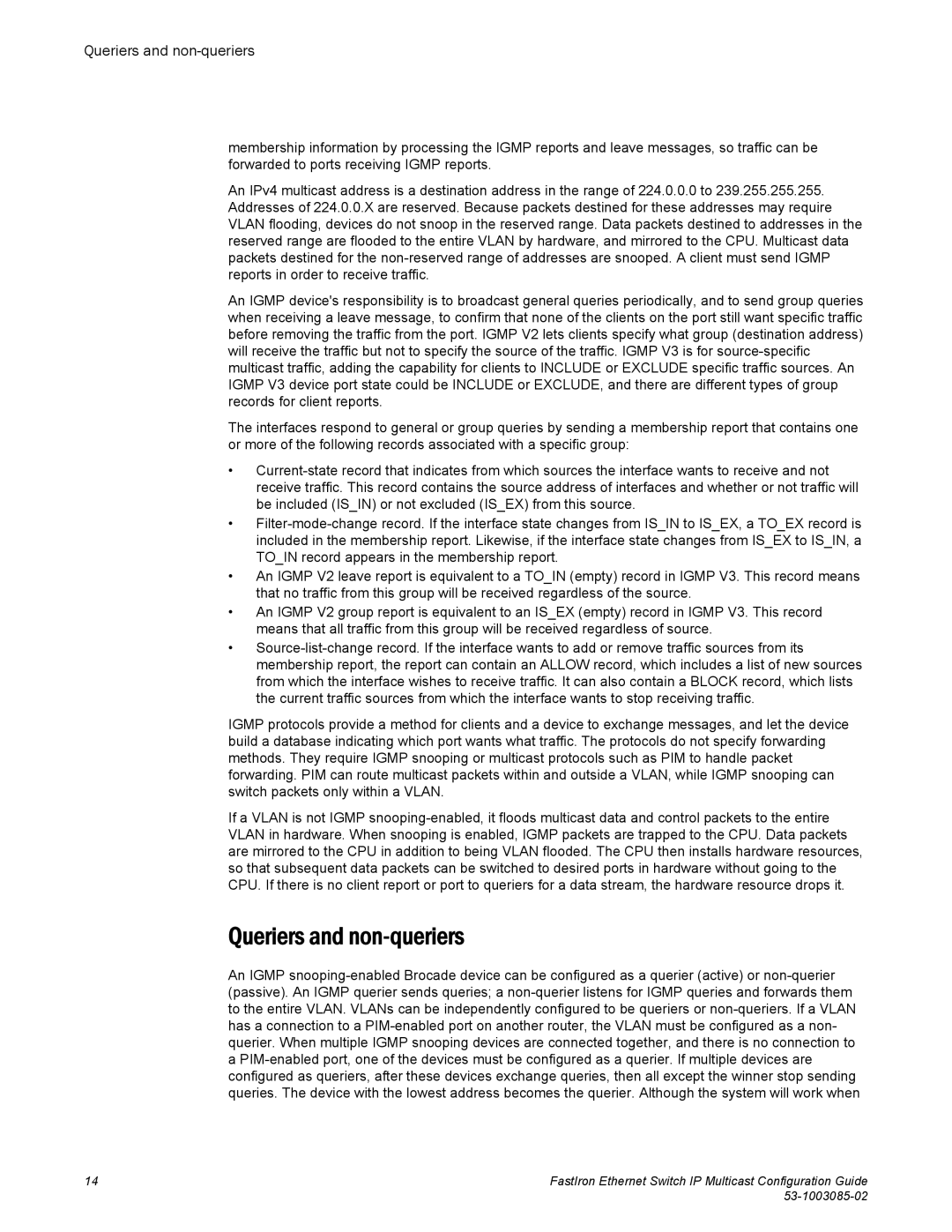Queriers and non-queriers
membership information by processing the IGMP reports and leave messages, so traffic can be forwarded to ports receiving IGMP reports.
An IPv4 multicast address is a destination address in the range of 224.0.0.0 to 239.255.255.255. Addresses of 224.0.0.X are reserved. Because packets destined for these addresses may require VLAN flooding, devices do not snoop in the reserved range. Data packets destined to addresses in the reserved range are flooded to the entire VLAN by hardware, and mirrored to the CPU. Multicast data packets destined for the
An IGMP device's responsibility is to broadcast general queries periodically, and to send group queries when receiving a leave message, to confirm that none of the clients on the port still want specific traffic before removing the traffic from the port. IGMP V2 lets clients specify what group (destination address) will receive the traffic but not to specify the source of the traffic. IGMP V3 is for
The interfaces respond to general or group queries by sending a membership report that contains one or more of the following records associated with a specific group:
•
•
•An IGMP V2 leave report is equivalent to a TO_IN (empty) record in IGMP V3. This record means that no traffic from this group will be received regardless of the source.
•An IGMP V2 group report is equivalent to an IS_EX (empty) record in IGMP V3. This record means that all traffic from this group will be received regardless of source.
•
IGMP protocols provide a method for clients and a device to exchange messages, and let the device build a database indicating which port wants what traffic. The protocols do not specify forwarding methods. They require IGMP snooping or multicast protocols such as PIM to handle packet forwarding. PIM can route multicast packets within and outside a VLAN, while IGMP snooping can switch packets only within a VLAN.
If a VLAN is not IGMP
Queriers and non-queriers
An IGMP
14 | FastIron Ethernet Switch IP Multicast Configuration Guide |
|
